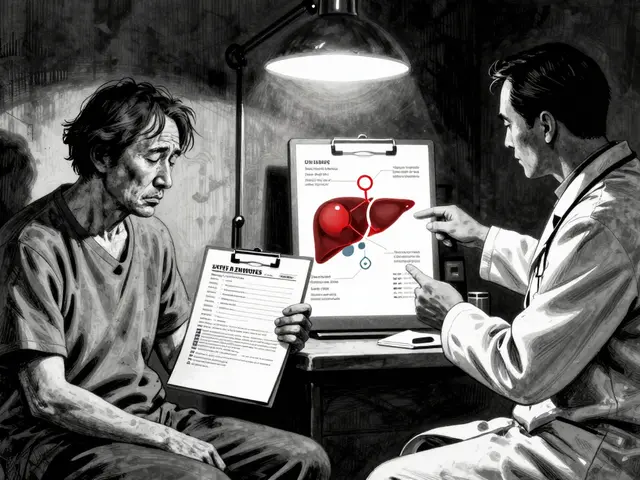Spasticity Explained: What It Is and How to Get Relief
If your muscles feel suddenly tight or you notice jerky movements that won’t stop, you might be dealing with spasticity. It’s a condition where the brain sends too‑much signal to the muscles, causing them to contract involuntarily. This can happen after a stroke, multiple sclerosis, cerebral palsy, or spinal injury. The good news is there are practical steps and medicines that can make daily life easier.
What Triggers Spasticity?
Spasticity isn’t random—it’s usually linked to nerve damage. When the nerves that tell muscles to relax get disrupted, the muscles stay in a semi‑contracted state. Common triggers include:
- Brain or spinal cord injuries: The signal pathway gets scrambled.
- Chronic conditions: MS or cerebral palsy often come with spastic episodes.
- Infections or fevers: They can temporarily raise muscle tone.
- Pain or stress: Even emotional tension can tighten muscles.
Knowing the cause helps you pick the right treatment. For instance, if spasticity follows a stroke, rehab exercises paired with medication work best. If it’s from MS flare‑ups, doctors may adjust disease‑modifying drugs first.
Top Meds & Therapies to Calm Stiff Muscles
There are several ways to dial down the unwanted muscle tone. Below are the most common options you’ll hear about when you talk to a doctor or physiotherapist.
- Baclofen: Often the first line, it works by calming nerve signals. It’s taken as a pill or an injection directly into the spinal fluid for tougher cases.
- Tizanidine: Good for short‑term relief; it relaxes muscles quickly but can make you sleepy.
- Dantrolene: Targets the muscle itself rather than the nerve, useful when other drugs cause side effects.
- Botox injections: Tiny amounts of botulinum toxin block the signal at the muscle level. You feel relief for a few months before needing another round.
- Physical therapy: Stretching, strengthening, and functional training keep muscles from locking up permanently.
- Assistive devices: Braces or orthotics hold joints in better positions, reducing spasm triggers.
Most patients start with oral meds like baclofen, then add Botox or physical therapy if the response isn’t enough. It’s a trial‑and‑error process—talk to your provider about side effects such as drowsiness, weakness, or liver concerns.
Beyond medicines, simple daily habits make a big difference. Gentle stretching in the morning, staying hydrated, and avoiding extreme temperatures can keep muscles from overreacting. Some people find heat packs or gentle massage helpful before bedtime to prevent nighttime spasms.
Remember, spasticity is manageable with the right mix of drugs, therapy, and lifestyle tweaks. Keep a log of what makes your muscles tighten—whether it’s stress, certain foods, or activity level—and share that with your health team. The more data you give them, the faster they can fine‑tune your plan.
If you’re looking for specific medication reviews or price guides, our site also offers up‑to‑date articles on drugs like baclofen and tizanidine, plus safe online buying tips. Use those resources to compare options, check legal requirements in your country, and find reputable pharmacies.
Baclofen: Uses, Side Effects, Dosage, and Patient Guide
Explore how baclofen works, what it's used for, real-life tips, and side effects. Get the facts about dosing, safety, and what doctors wish you knew.
About
Health and Wellness
Latest Posts


C. difficile Colitis: How Antibiotics Trigger It and Why Fecal Transplants Work
By Orion Kingsworth Nov 21, 2025

Buy Generic Lipitor (Atorvastatin) Online Cheap in 2025: Safe Options, Prices, and Tips
By Orion Kingsworth Sep 9, 2025

Elimite (Permethrin) vs. Top Scabies Alternatives - What Works Best?
By Orion Kingsworth Sep 24, 2025

